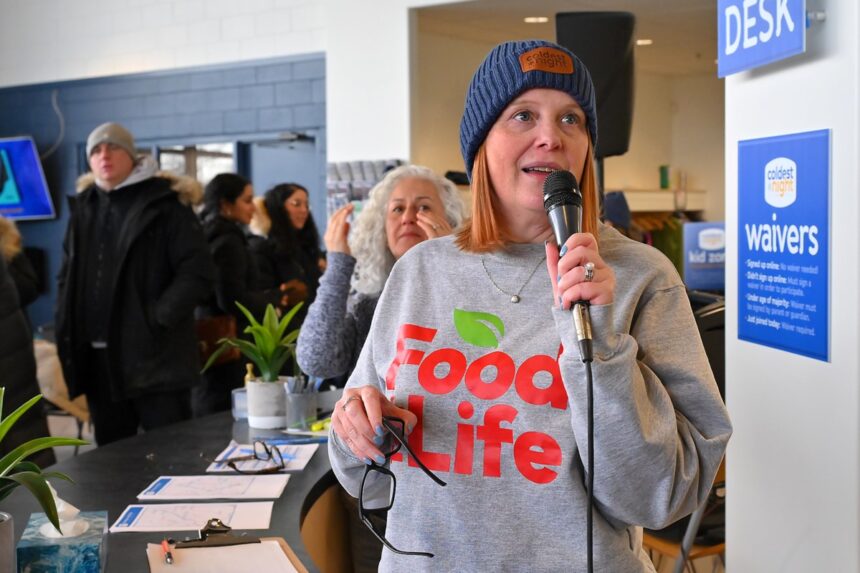In a move that brings needed relief to hundreds of local families, Halton Region announced a substantial funding boost yesterday for emergency food programs facing unprecedented demand across Milton, Oakville, Burlington, and Halton Hills.
The $1.2 million investment, approved unanimously by Regional Council, will directly support frontline organizations like Food for Life and the Salvation Army, which have reported a troubling 35% increase in food bank visits since last year.
“We’re seeing folks who never imagined needing a food bank,” explained Janice Robinson, who coordinates Milton’s Community Resource Centre. During my visit to their distribution hub last week, volunteers were packing emergency hampers for nearly 200 families—many first-time users with full-time jobs.
The funding comes as Statistics Canada data reveals that grocery prices in Ontario have risen 17.8% since 2021, creating what social policy experts call a “perfect storm” of financial pressure on middle and working-class households.
“This isn’t just about hunger—it’s about dignity,” Regional Chair Gary Carr told me during a phone interview. “When a parent working full-time still can’t put dinner on the table, we have a collective responsibility to act.”
The region’s approach represents a significant shift from traditional food bank models, emphasizing direct purchasing power and community-based distribution rather than relying solely on donations. Under the new framework, approximately 40% of funds will support immediate food purchasing, while the remainder establishes sustainable infrastructure including community gardens, food recovery programs, and nutrition education.
Burlington MPP Natalie Pierre, who helped secure matching provincial funds, emphasized the initiative’s broader implications. “Food security intersects with every aspect of community wellbeing—from health outcomes to educational achievement. This represents smart social investment.”
During my conversation with Food for Life Executive Director Graham Hill, he highlighted how the funding addresses changing demographics of need.
“Five years ago, seniors represented about 12% of our clients. Today, they’re nearly 30%,” Hill explained while showing me their warehouse operation in Burlington. “Fixed incomes simply haven’t kept pace with inflation, especially housing costs.”
The program’s design reflects feedback from service users themselves. Through a series of community consultations held at Halton libraries last summer, recipients identified barriers beyond simple food access.
“What we heard consistently was that transportation and timing were huge obstacles,” noted Dr. Aisha Johnson, Halton’s Commissioner of Social Services. “A food bank open weekdays from 9-5 doesn’t help someone working multiple jobs or lacking transportation.”
In response, the funding prioritizes organizations offering extended hours, delivery options, and satellite distribution through faith communities and neighborhood hubs.
The announcement comes just weeks after the Halton Poverty Reduction Coalition released its “State of Hunger” report documenting that nearly 15% of Halton households experienced some form of food insecurity in 2023—a figure that rises to 26% among households with children.
Coalition chair Reverend James Sutton called the funding “necessary but insufficient” when addressing root causes. “We welcome this vital support while recognizing we need broader policy changes around affordable housing, livable wages, and income supports.”
What distinguishes this initiative from previous efforts is its emphasis on dignity and choice. Rather than pre-packaged hampers, several programs will implement “client choice” models where recipients select items based on cultural preferences, dietary needs, and family circumstances.
Oakville mother of three Samantha Chen, who began utilizing food support services after her husband’s workplace injury last year, described the difference this approach makes.
“When you’re already feeling like you’ve failed your family, standing in line for a box someone else packed feels awful,” Chen told me at an Oakville food share program. “Being able to choose foods my kids will actually eat—it preserves a small piece of parental dignity.”
The region’s data-driven approach also targets geographic “food deserts” where affordable grocery options remain sparse. Halton Hills Mayor Ann Lawlor pointed out that rural communities face unique challenges.
“In some of our rural areas, a family without reliable transportation might be 12 kilometers from the nearest affordable grocery store,” Lawlor explained during council discussions. “This funding helps establish community fridges and satellite pantries in those underserved areas.”
The region’s approach represents a growing recognition that food insecurity affects not just the unemployed but increasingly working families caught between stagnant wages and rising costs. According to the Halton Community Foundation’s Vital Signs report, nearly 60% of food assistance recipients report employment income—a stark shift from patterns even five years ago.
While the funding provides immediate relief, questions remain about longer-term solutions. Both regional officials and community organizations acknowledge that emergency food systems, while necessary, don’t address structural issues driving increased need.
“We can’t food-bank our way out of poverty,” observed Milton Councillor Sameera Ali, who pushed for the funding increase. “But we also can’t ignore immediate needs while working toward systemic change.”
For families like the Patels in Milton, the reinforced support network offers breathing room in an impossible financial squeeze. After two decades working in manufacturing, Raj Patel found himself seeking assistance for the first time last month.
“I never thought we’d be in this position,” he told me quietly as his children selected produce at a community distribution event. “But between mortgage payments and my wife’s medical expenses, something had to give.”
The region’s investment represents a significant shift toward recognizing food security as a core component of community health rather than simply a charitable concern—one that local advocates hope will inspire similar approaches across Ontario municipalities facing identical pressures.






